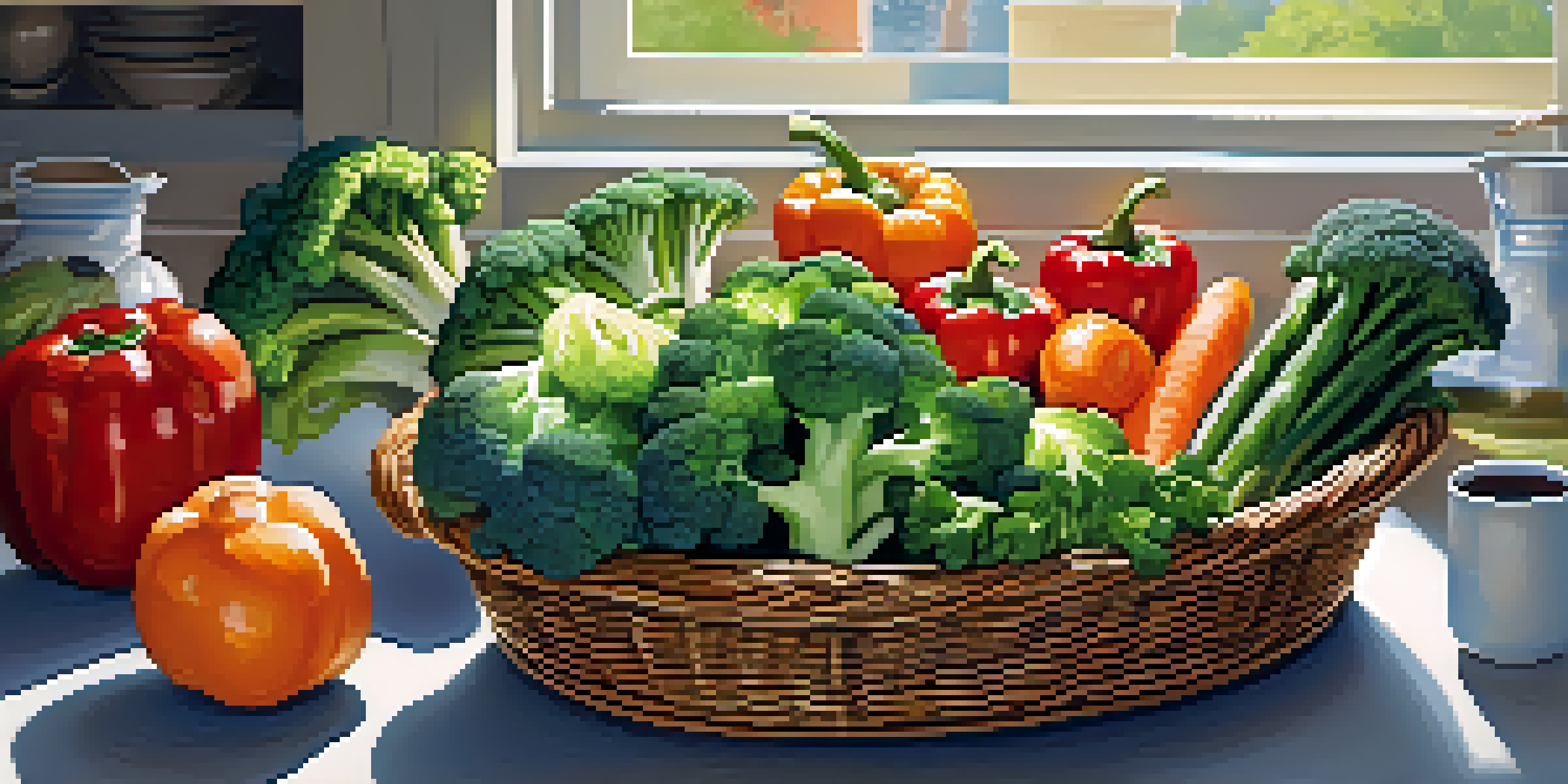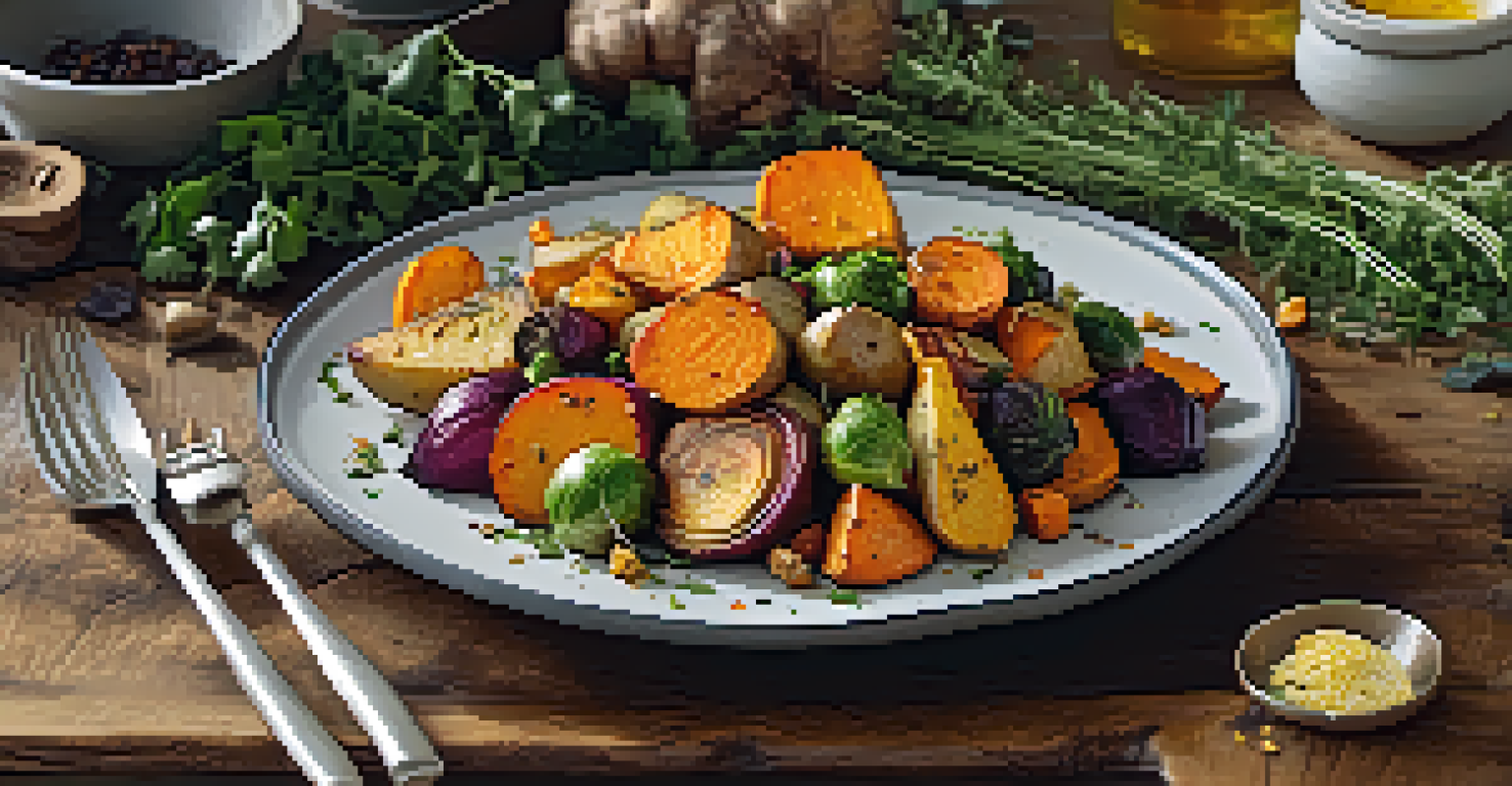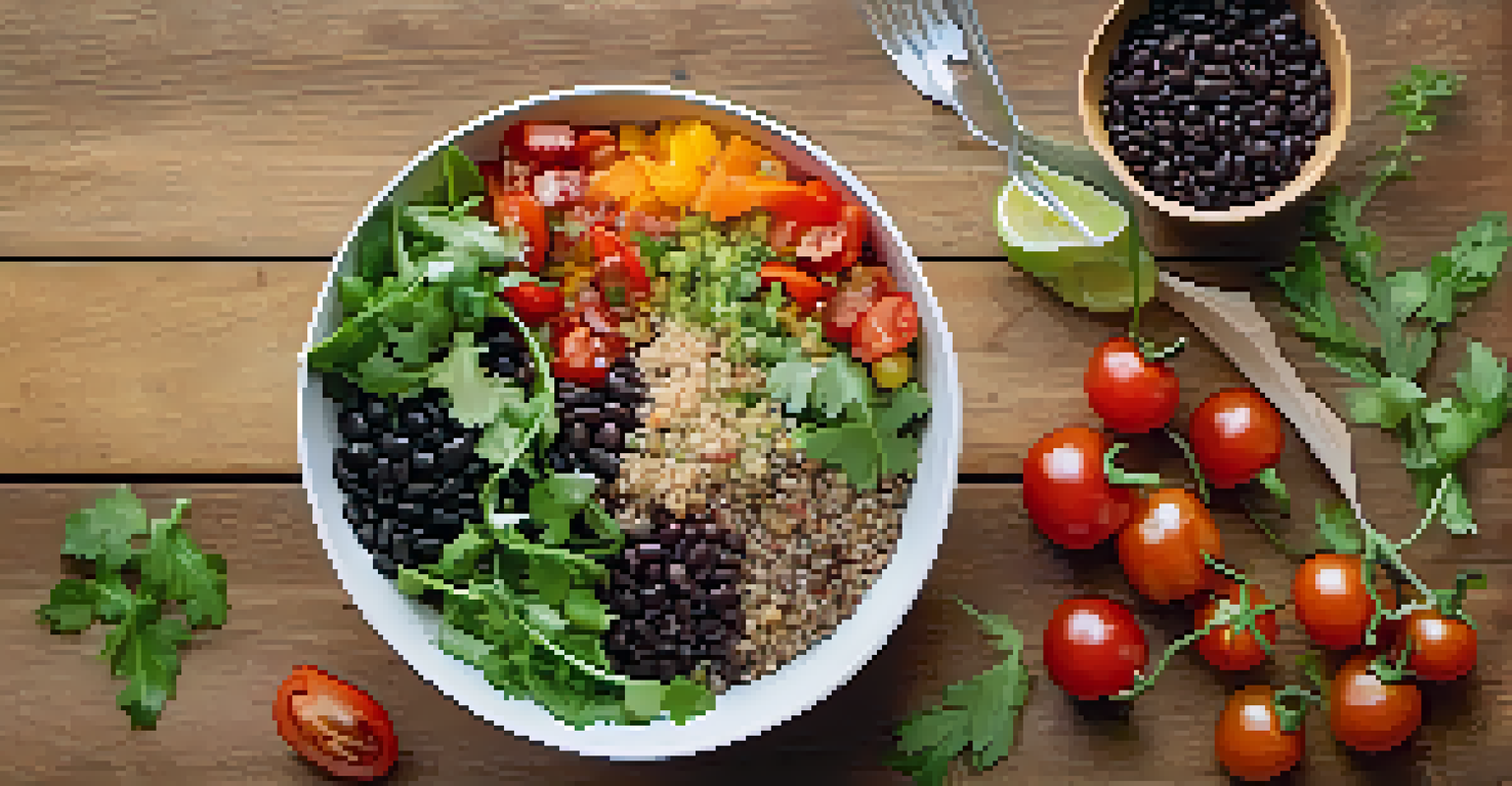How to Use Cooking Methods to Maximize Fiber Intake

Understanding Fiber and Its Importance
Fiber is a crucial part of a healthy diet, helping with digestion and weight management. It comes in two types: soluble, which dissolves in water, and insoluble, which adds bulk to your stool. Both types play essential roles in maintaining gut health and preventing chronic diseases.
Let food be thy medicine and medicine be thy food.
Incorporating fiber-rich foods into your meals can lead to numerous health benefits, including lower cholesterol and improved blood sugar levels. Fruits, vegetables, whole grains, and legumes are excellent sources of fiber. Understanding how to cook these foods can enhance their fiber content and overall health benefits.
By focusing on methods that preserve or enhance fiber, you can create delicious meals that support your well-being. Let’s explore how cooking techniques can help you maximize your fiber intake.
Steaming: The Gentle Cooking Method
Steaming is one of the best methods to retain the fiber content in vegetables. Unlike boiling, which can leach nutrients into the water, steaming keeps the fiber intact while also preserving vitamins and minerals. This method allows vegetables to maintain their crunch and vibrant colors, making them more appealing.

For example, steaming broccoli or carrots not only enhances their flavor but also maximizes their health benefits. You can easily steam veggies in a pot with a steaming basket or use a microwave-safe dish with a lid. Just a few minutes is often all it takes to achieve tender, nutrient-packed vegetables.
Fiber's Role in a Healthy Diet
Incorporating fiber-rich foods like fruits, vegetables, whole grains, and legumes can significantly improve digestion and overall health.
Incorporating steamed vegetables into salads or as side dishes can significantly boost your fiber intake. Try mixing steamed greens with whole grains for a hearty, fiber-rich meal.
Roasting: A Flavorful Way to Enhance Fiber
Roasting vegetables can bring out their natural sweetness while also retaining their fiber content. The high heat caramelizes the sugars in vegetables, creating a rich flavor that can make even the most fibrous veggies enjoyable. This method works wonders for root vegetables like sweet potatoes and beets.
You are what you eat, so don't be fast, cheap, easy, or fake.
When you roast vegetables, you're also likely to use healthy oils, which can help with the absorption of fat-soluble vitamins. Tossing veggies like Brussels sprouts or cauliflower with olive oil and aromatic spices before roasting can elevate both taste and nutrition.
Pair roasted vegetables with whole grains or legumes for a filling meal. For instance, a roasted vegetable quinoa salad not only looks appetizing but is also a fiber powerhouse!
Sautéing: Quickly Cooking for Maximum Fiber
Sautéing is a quick cooking method that can also help maintain the fiber content in vegetables. By using a small amount of oil and cooking over medium-high heat, you can soften vegetables without losing their beneficial nutrients. This method is perfect for fibrous vegetables like spinach, kale, and bell peppers.
For instance, a quick sauté of spinach with garlic and olive oil not only retains the fiber but also enhances the flavors. This dish can be served as a side or incorporated into pasta for a nutritious boost.
Effective Cooking Methods for Fiber
Techniques such as steaming, roasting, and sautéing can help retain the fiber content in vegetables while enhancing their flavors.
Keep in mind that the key to successful sautéing is to avoid overcooking. Just a few minutes in the pan can result in tender, vibrant vegetables that are delicious and nutritious.
Blanching: A Technique to Preserve Fiber and Color
Blanching involves briefly boiling vegetables and then plunging them into ice water, a method that helps preserve fiber and vibrant colors. This technique is especially useful for green vegetables like green beans and asparagus. Blanching can enhance the taste and texture while keeping the fiber intact.
By blanching your veggies, you can also prepare them for freezing or adding to salads. This method softens the vegetables slightly, making them easier to digest while retaining their nutritional value.
For a quick snack, consider blanching mixed vegetables and tossing them in a light vinaigrette. Not only do you get a fiber boost, but you'll also have a colorful and appealing dish.
Using Whole Grains in Cooking for More Fiber
Incorporating whole grains into your meals is a fantastic way to increase your fiber intake. Unlike refined grains, whole grains retain the bran and germ, which are rich in fiber. Think brown rice, quinoa, barley, and whole wheat pasta as excellent additions to your diet.
Cooking whole grains can be simple; just follow the package instructions or use them as a base for salads, stir-fries, or soups. For example, a quinoa salad with black beans and diced vegetables not only provides a delicious balance but is also fiber-rich.
Boosting Fiber with Legumes and Grains
Adding legumes and whole grains to meals not only increases fiber intake but also provides essential nutrients and variety.
Experimenting with different whole grains can add variety to your meals and keep them interesting. You might be surprised at how much flavor and texture whole grains can contribute to your favorite dishes.
Incorporating Legumes for Fiber Boost
Legumes, such as beans, lentils, and chickpeas, are some of the richest sources of fiber. They can be used in various cooking methods, from soups and stews to salads and side dishes. A simple way to boost fiber is by adding legumes to your meals.
For instance, a hearty lentil soup can provide both fiber and protein, making it a satisfying dish. You can also toss chickpeas into a salad or roast them for a crunchy snack, both of which enhance your fiber intake.

Whether you use canned or dried legumes, the key is to incorporate them regularly into your diet. They are versatile, affordable, and can transform a regular dish into a fiber-rich feast.
Creative Ways to Serve High-Fiber Meals
Getting creative with how you serve your meals can encourage fiber intake. Think about layering dishes, like a fiber-rich vegetable lasagna made with whole-grain noodles and plenty of veggies. This not only looks appealing but also packs a nutritional punch.
You can also use bowls to mix various fiber sources, such as grains, veggies, and legumes. A colorful grain bowl topped with fresh veggies and a drizzle of dressing can be both satisfying and rich in fiber.
Exploring different cuisines can inspire you to create high-fiber dishes. From Mediterranean chickpea salads to Asian stir-fried vegetables, there are countless ways to enjoy your fiber-rich foods while keeping meals exciting.